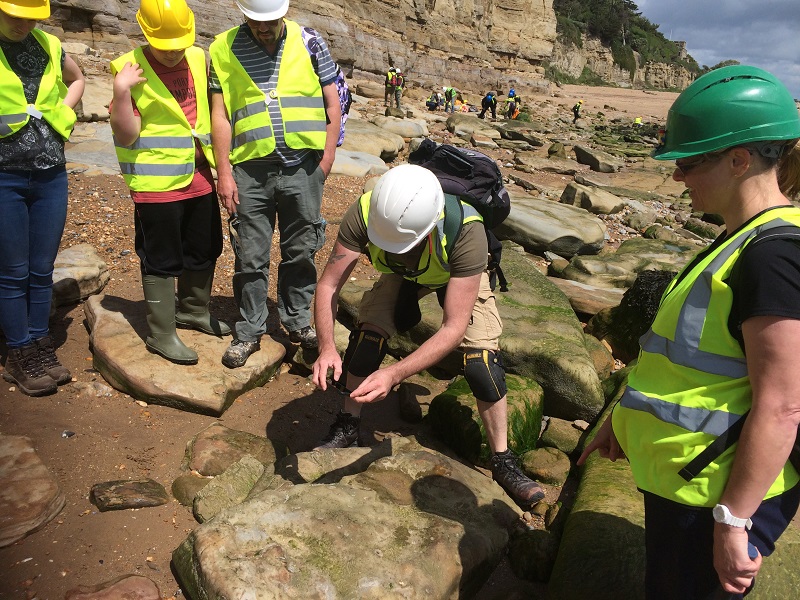Thirty amateur fossil hunters descended onto Pett Level beach on Sunday, June 4. They weren’t hard to spot, all kitted out in hard hats and hi-viz tabards and the exploration was organised by the UK Amateur Fossil Hunters (UKAFH).
The section of the coast between Pett Level and Fairlight Cove provides the opportunity to explore the rocks and fossils from the early Cretaceous period, around 140 million years ago.
The rock sediment, exposed in the highly unstable cliffs and on the foreshore, shows evidence of when the area formed part of a very large lagoon or inland lake which was fed by a number of rivers. The sediment that flowed down from the rivers accumulated at the lake bottom to form the Wealden Group of rock which is found across Sussex, Kent and the Isle of Wight.
In Cretaceous times the climate would have been sub-tropical and both herbivorous and carnivorous dinosaurs walked along the shoreline to drink from the lake, therefore the remains and other evidence of dinosaurs are a common occurrence on the beaches at Pett Level and Fairlight.
The highlight of Sunday’s walk was the discovery of a three clawed dinosaur footprint embedded in the rock (see picture) but there was an abundance of other fossils on the beach. In the Cretaceous times conifers were the dominant tree and fossilised wood is a common find, as too are fossilised fish scales and bones, bone remains of flying reptiles called pterosaurs and the bones and teeth of crocodiles.
While fossil hunting can be great fun for all the family, the organisers stressed that the cliff at Pett Level is very unstable and foraging should be done at low tide and well away from the cliff itself.
In recent months, Rother District Council published a code of conduct following incidents of commercial and irresponsible fossil collecting. The Council stressed that while it encourages people to comb the beaches and that they can keep any small fossils they find, the Council discourages the collecting of fossils for commercial sale and the systematic stripping of fossil material.
Photo: Kevin McCarthy



